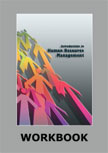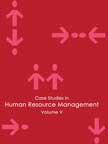Whole Foods Market's Unique Work Culture and Practices
|
|
Case Details:
Case Code:
HROB086
Case Length: 23 Pages
Period: 1978 -2006
Organization: Whole Foods Market
Pub Date: 2006
Teaching Note: Available
Countries: USA
Industry: Retail
To download Whole Foods Market's Unique Work Culture and Practices case study
(Case Code: HROB086) click on the button below, and select the case from the list of available cases:

Price:
For delivery in electronic format: Rs. 500;
For delivery through courier (within India): Rs. 500 + Rs. 25 for Shipping & Handling Charges
»
Human Resource, Organization Behavior Case Studies
» HRM Short Case Studies
» View Detailed Pricing Info
» How To Order This Case
» Business Case Studies
» Area Specific Case Studies
» Industry Wise Case Studies
» Company Wise Case Studies

Please note:
This case study was compiled from published sources, and is intended to be used as a basis for class discussion. It is not intended to illustrate either effective or ineffective handling of a management situation. Nor is it a primary information source.
Chat with us

Please leave your feedback

|
|




<< Previous
Excerpts
Culture and Practices
WFM was one of the most profitable grocery retailers in the US. It was also one
of the rare retailers that had a double-digit growth rate in a rapidly
saturating industry. The company had a compounded annual growth rate of around
32 percent between 1991 and 2005. In 2005, WFM had same store sales growth of
12.8 percent, and an overall revenue growth of almost 22 percent over 2004...
|
|
Grassroots Management
Teams were the focal point of the operations of WFM, and they formed the core of
the company's culture. The entire WFM system was divided into teams, up to the
highest level in the hierarchy. Each store was an autonomous profit center
comprised of teams.
|
|
At the
lowest level, within each store, there were usually around 10
self-managed teams. In general, stores employed between 30 and 300
people (depending on the location and size of the store), and every
employee belonged to his/her departmental team.
Each team was
responsible for one aspect of the store's operations, like grocery;
meat, poultry and seafood; prepared foods; bakery goods;
beer/wine/cheese; nutrition products (nutritional supplements, herbs and
body care), etc. All stores also had a customer service team and a
front-end team of cashiers... |
Transparency
WFM voluntarily disclosed critical financial information to its employees. Every
year, the company released a vast amount of data giving the various operational
metrics of the business. However, unlike most other companies, this information
was not targeted at the press or the public, but at the employees...
Exhibits
Exhibit I - Whole Foods' Ranking in Fortune's List of '100
Best Companies to Work For'
Exhibit II - A Note on Organic Food
Exhibit III - Acquisitions and Subsidiaries of WFM
Exhibit IV - Annual Income Statement
Exhibit V - A Snapshot of WFM and its Competitors
Exhibit VI - WFM's Vision - Whole Foods Whole People Whole Planet
Exhibit VII - WFM's Core Values
Exhibit VIII - The 11 Regional Offices of Whole Foods Market
Exhibit IX - Compensation of WFM's Top Executives
|
|









